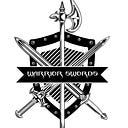Unveiling the Legacy: Exploring the Rich Heritage of Korean Swords
Introduction:
For centuries, swords have been more than just tools of war in Korea; they’ve been symbols of valor, resilience, and cultural identity. As guardians of the nation’s sovereignty, they stood as stalwart defenders against invaders and embodied the indomitable spirit of the Korean people. Beyond the battlefield, these swords played pivotal roles in religious ceremonies, underscoring their significance beyond mere instruments of combat. Join me on a journey as we delve into the evolution, types, construction, and enduring legacy of Korean swords.
“Korean swords: Symbols of valor and cultural identity, standing as stalwart defenders against invaders.”
Evolution of Korean Swords throughout History:
The evolution of Korean swords mirrors the dynamic shifts in sociocultural trends and military strategies over the centuries. From the Three Kingdoms Period to the Joseon Dynasty, each era left its imprint on sword design and usage. The transition from mounted warfare to infantry-based tactics led to the development of various sword types tailored to specific combat roles. Despite the advent of firearms in the modern era, ceremonial swords persisted, serving as poignant reminders of Korea’s martial heritage.
Main Types of Korean Swords:
Among the myriad types of Korean swords, two stand out for their historic importance and versatility: the Hwando and the Geomjung. The Hwando, with its short length and single edge, was favored by foot soldiers for its ease of handling in close-quarters combat. On the other hand, the Geomjung, with its double-edged blade, symbolized balance and justice in Korean society, serving both offensive and defensive purposes.
Construction and Materials of Korean Swords:
Craftsmanship and materials were integral to the strength and sharpness of Korean swords. Special iron and steel techniques, coupled with meticulous assembly, resulted in blades that were both durable and lethal. Each component, from the blade to the scabbard, played a vital role in enhancing the sword’s performance in combat, reflecting the ingenuity of Korean swordsmiths.
Korean Swords vs. Japanese Swords:
While Korean and Japanese swords share similarities in function and symbolism, they also possess distinct characteristics reflective of their respective cultures. Korean martial arts, like their Japanese counterparts, emphasize the use of real swords for training, highlighting the enduring relevance of these weapons in contemporary practice.
Conclusion:
In conclusion, Korean swords transcend their role as mere weapons; they embody the spirit and heritage of a nation forged through centuries of triumph and adversity. As symbols of bravery and cultural identity, they continue to inspire reverence and admiration, serving as enduring reminders of Korea’s rich martial tradition. Through their design, construction, and usage, Korean swords epitomize the resilience and ingenuity of the Korean people, ensuring their legacy endures for generations to come.
“In conclusion, Korean swords transcend weaponry, embodying the resilience and heritage of a nation.”
